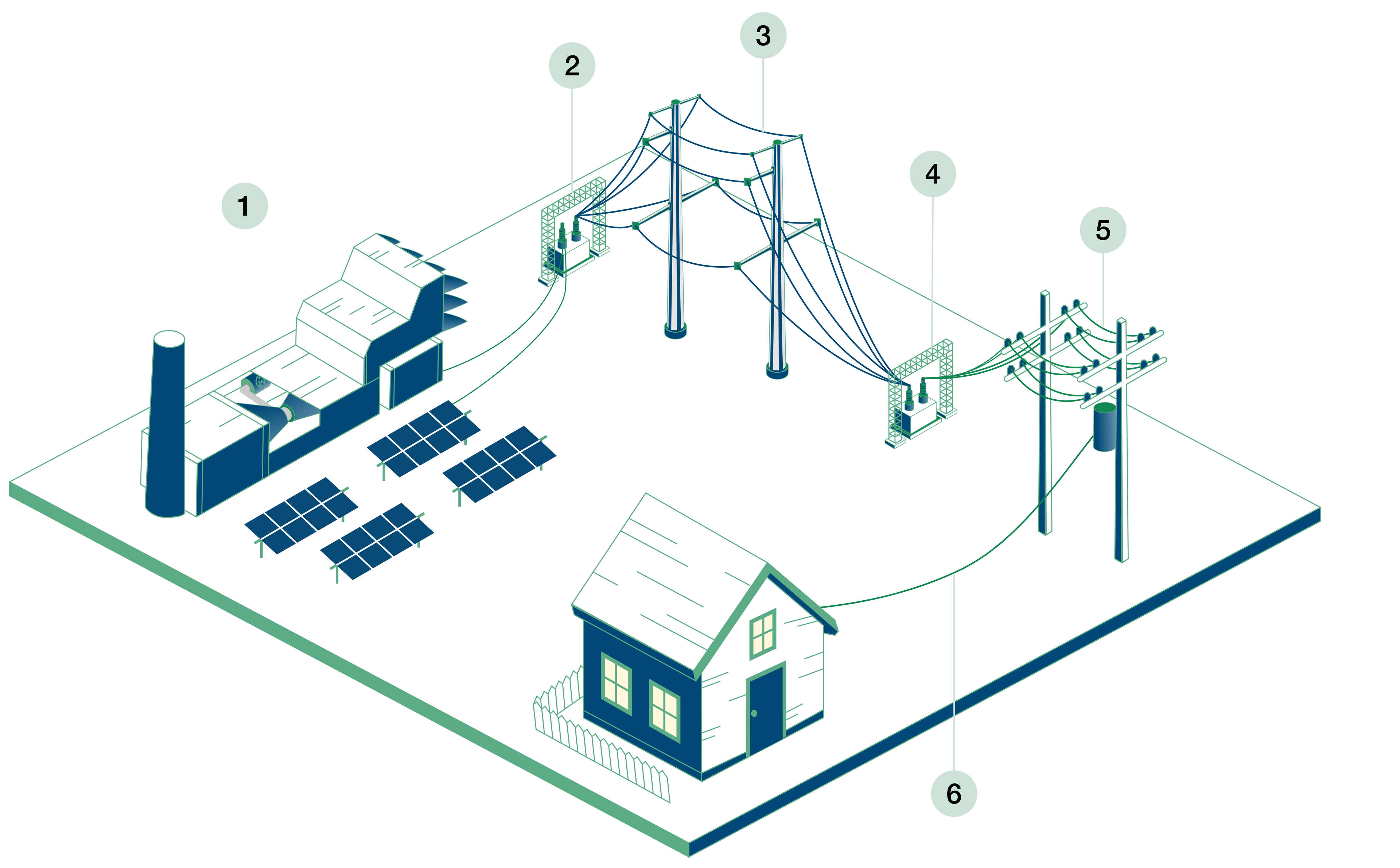
Bringing power to where it’s needed most
Bringing power to where it’s needed most
The future requires a more robust, resilient grid. That’s why we are investing in the transmission lines capable of moving energy from where it’s produced to where it’s needed most. Invenergy is building transmission infrastructure to meet the critical energy needs of our communities and customers, as well as grid operators and governments. In the process, our infrastructure projects generate good-paying local jobs, reduce carbon emissions and enable energy security.
How Transmission Works
- 1 Electricity is generated.
- 2 Transformer increases voltage of electricity.
- 3 Electricity travels through transmission lines.
- 4 Transformer decreases voltage of electricity.
- 5 Electricity travels through collection lines.
- 6 Electricity is delivered to customers.

Benefits of Transmission
Reliability in electricity infrastructure and consistency in customer utility costs is a priority for Oklahoma families.
Improving Electric Stability
Bolstering Energy Security
Affordable Energy
Explore Invenergy's Transmission Portfolio
4,100+ miles of transmission and collection lines developed
15,000+ landowner relationships across Invenergy generation and transmission projects
$40 Billion in new interconnection and energy generation investments enabled by Invenergy transmission projects

